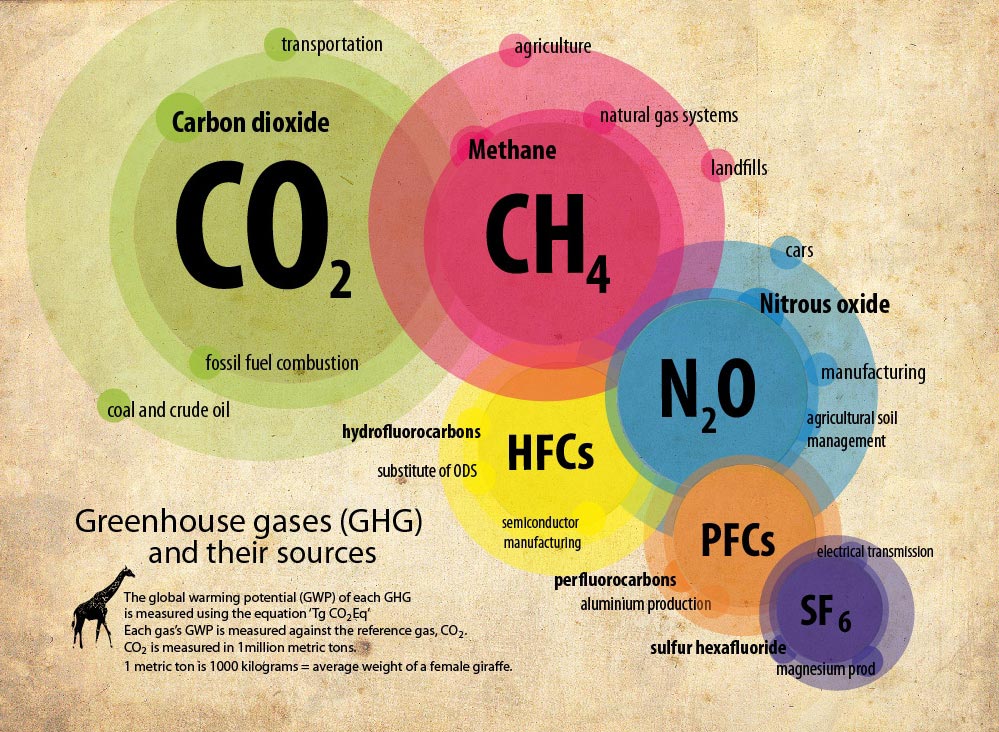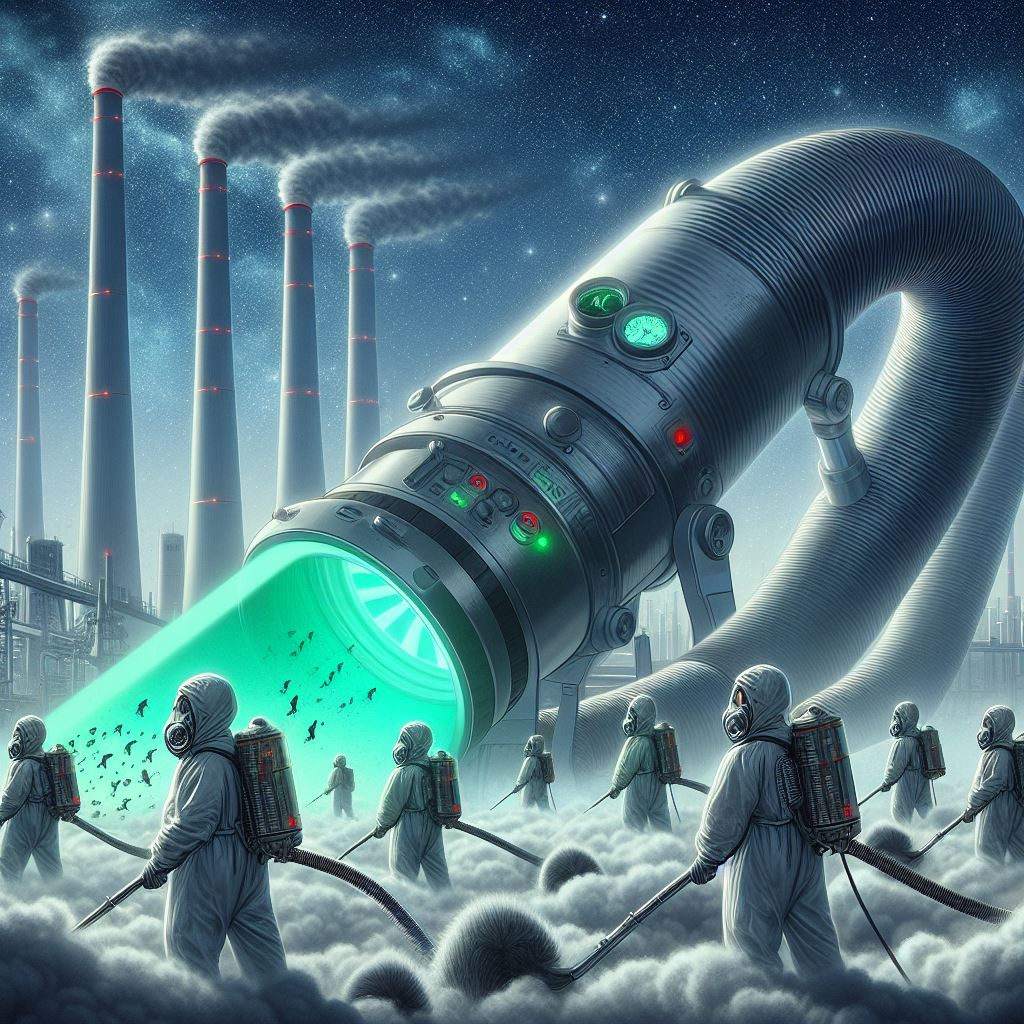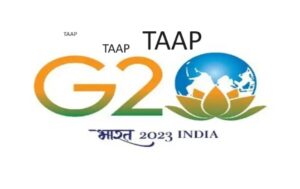The three most damaging greenhouse gases are Carbon dioxide, Methane and Nitrous oxide. However, there are more as you can see in the picture below. The emissions of these 3 as a byproduct of various economic activities that we perform is the cause for global warming.

The various ways in which we produce these gases are given in a very simplified form for a high-level understanding are:
| What? | Why? | Outcome |
| Fossil Fuels | Burning fossil fuels for electricity, heat, and transportation. | Co2 emission into atmosphere |
| Farming Cattle and Paddy | Foods like rice and animal meats | Methane emission, potent but short-lived than Co2 |
| Deforestation (Land use) | Building homes, furniture and a variety of wood-based derivatives like physical books, paper, tissues, paper, diapers etc. | Reduction in Co2 absorption by trees |
| Various Industrial Processes | Chemical reactions from various industries, agriculture and also waste management releases nitrous oxide. | Nitrous oxide emission depletes the ozone layer |
Climate Change reversal needs to happen by critically looking at these activities and industries involved in the manufacture of the various goods.
As we humans are the consumers, there needs to be a behavior change that needs to happen to ensure people start using climate friendly products and service.
There is the economic impact to consider in shutting down factories, products or services on livelihood of people involved in the society.
Hence it is prudent for every country, nation state to look within their own administrative boundaries and come up with a Green Transition Plan as a first step.
Next important step is to look at quick wins within the administrative boundary on what changes can bring on the maximum results to control / reduce and / or eliminate emissions.
Hence this needs strategic planning that looks at the problem in detail and create tactical solutions as well as long term solutions to achieve net zero.
It may not be possible to be net zero, but it is possible to be net positive as that is what is needed. To have the account in the positive side and keep the negative industries causing emissions within limits and encourage new technologies that deliver similar results with minimal impact to environment.
Disclosure and regulation play a critical part in managing this. Approvals for new industries, factories and infrastructure needs to include a comprehensive environment impact disclosure and mitigation plan, audit and testing mechanism to verify claims and take penal actions to violators.
We need a current state assessment to understand what our emission levels are and where we need to be every year across all parties (even within a country’s administrative boundary like states), then identify the green projects, make a list, find green finance and right technology partners for each project. Start and execute the projects, handle issues and blockages, verify new low-level emissions, are they within permissible limits? Use the learning and carry on with the next project.
As we build capacity in the area, the productivity and efficiency of this work will increase, and our turnaround times will be faster. These are some high-level thoughts on how we can address the climate change work similar to other industrial projects in society today.




